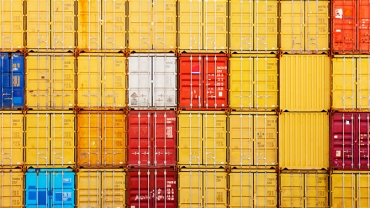
DACH region – Switzerland: the tension between transfer prices and customs values
Multinational companies typically use transfer pricing systems to set the price charged within the group for providing a particular service. The OECD transfer pricing guidelines are the international standard for determining, verifying and documenting that transfer prices are appropriate.
The customs value of imported goods, on the other hand, is supposed to correspond to the transaction value, i.e. the price actually paid or payable for the goods when sold for export into a customs territory. Additional costs, such as licence payments, commission, transport costs, packaging, etc. may be added if these components are not already included in the price paid. If there is no transaction value, the customs value must be determined by another suitable method. The customs value is usually determined on the basis of the customs valuation methods set out in the Agreement on Implementation of Article VII of the General Agreement on Tariffs and Trade 1994 (GATT).
Transfer pricing versus customs valuation
The level at which transfer prices are set depends on the nature of the parties involved in the transaction (based on functions performed and the allocation of risks and assets). Hence the same product can have a higher or lower transfer price depending on the business model that is used. For example, the transfer prices for a routine distribution company may be adjusted over time to generate a reasonable sales margin that satisfies the arm’s length principle in the OECD guidelines. On the other hand, a distribution company that has market set-up risks will probably pay a higher transfer price initially (as a result of which it generates losses during this phase). But over time it will tend to have steadier and lower transfer prices than a routine company in an established and profitable market and thus higher profits to compensate for the costs of establishing itself in the market. From the perspective of the tax authorities in the distribution company’s home country), lower transfer prices lead to higher taxable profits.
Customs duties, on the other hand, are levied ad valorem with just a few exceptions. The higher the transaction value, the higher the duty, and depending on the country of import further taxes such as value-added tax or import tax may also be payable. Customs authorities therefore aim to set the customs values as high as possible.
Challenges of definition
The above discussion underlines that the definition of transfer price and that of customs value pull in opposite directions to some extent. The relationship between transfer pricing and customs valuation is by no means a new issue and has been debated actively at both national and international level for many years. Business has been critical of the fact that customs authorities often use the available transfer pricing information for customs valuation purposes, i.e. particularly for identifying transactions between affiliated companies and for making retrospective price adjustments, even though transfer prices are intended to be used in a direct taxation context. However, the conclusion reached in the discussions was that different legal systems meant that coordination or amalgamation of the different methodologies is impossible.
From a customs valuation perspective, the question is whether and to what extent the information in transfer pricing documentation on intra-group transactions can be used to determine a particular customs value. The affiliation between the parties plays an important role in customs valuation, as in practice the customs authorities often question the transaction value if the parties are closely affiliated. It is therefore advisable for the company to ensure that the determination of the customs value is also documented in writing. Excerpts from the transfer pricing documentation may be useful as a starting point for discussing customs valuation, even if the transfer pricing documentation has not been written for the customs authorities. If necessary the customs valuation documentation can be submitted to the local customs authorities for customs valuation purposes.
Practical challenges
Companies active in international trade should therefore be aware of the transactions that could give rise to a customs valuation risk. They should therefore be asking the following questions:
- Is the invoice price an arm’s length price (i.e. it is not influenced by the degree of affiliation)?
- Where goods are imported without a transfer price being charged, is a customs value still determined that is compliant with the arm’s length principle?
- Are there licence agreements between affiliated companies that could increase the customs value of the goods being imported through the licence payment?
- Does the invoice amount correspond to the final selling price, or are there subsequent periodic price adjustments that raise or lower the price?
- Can customs duties that have already been paid be reclaimed if the transfer price is reduced at a later date?
The financial and administrative consequences of mistakes in dealing with customs valuation can be huge. Companies should therefore set up clear customs valuation guidelines and implement these consistently across their groups.
Conclusion and outlook
The tension between transfer prices and customs valuation will remain an issue for business. Companies should therefore ensure that not just transfer prices, but also customs values are determined in accordance with the legal requirements, and above all are documented. Coordination across departments is essential, as the correct customs value offers the potential to optimise costs, as well as ensuring that the payment of import duties is fully compliant with the law.
Contact us
Oliver Hulliger






